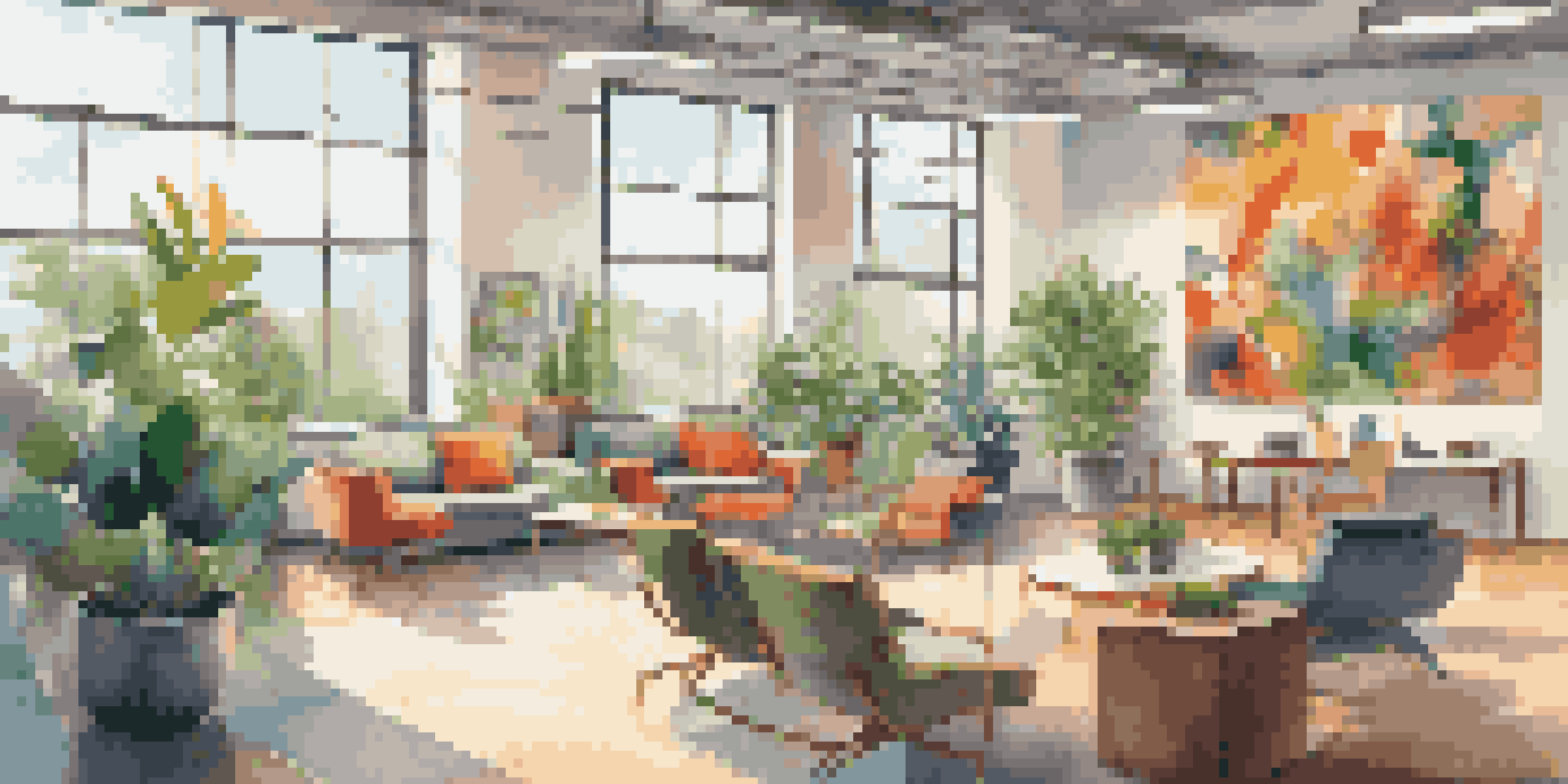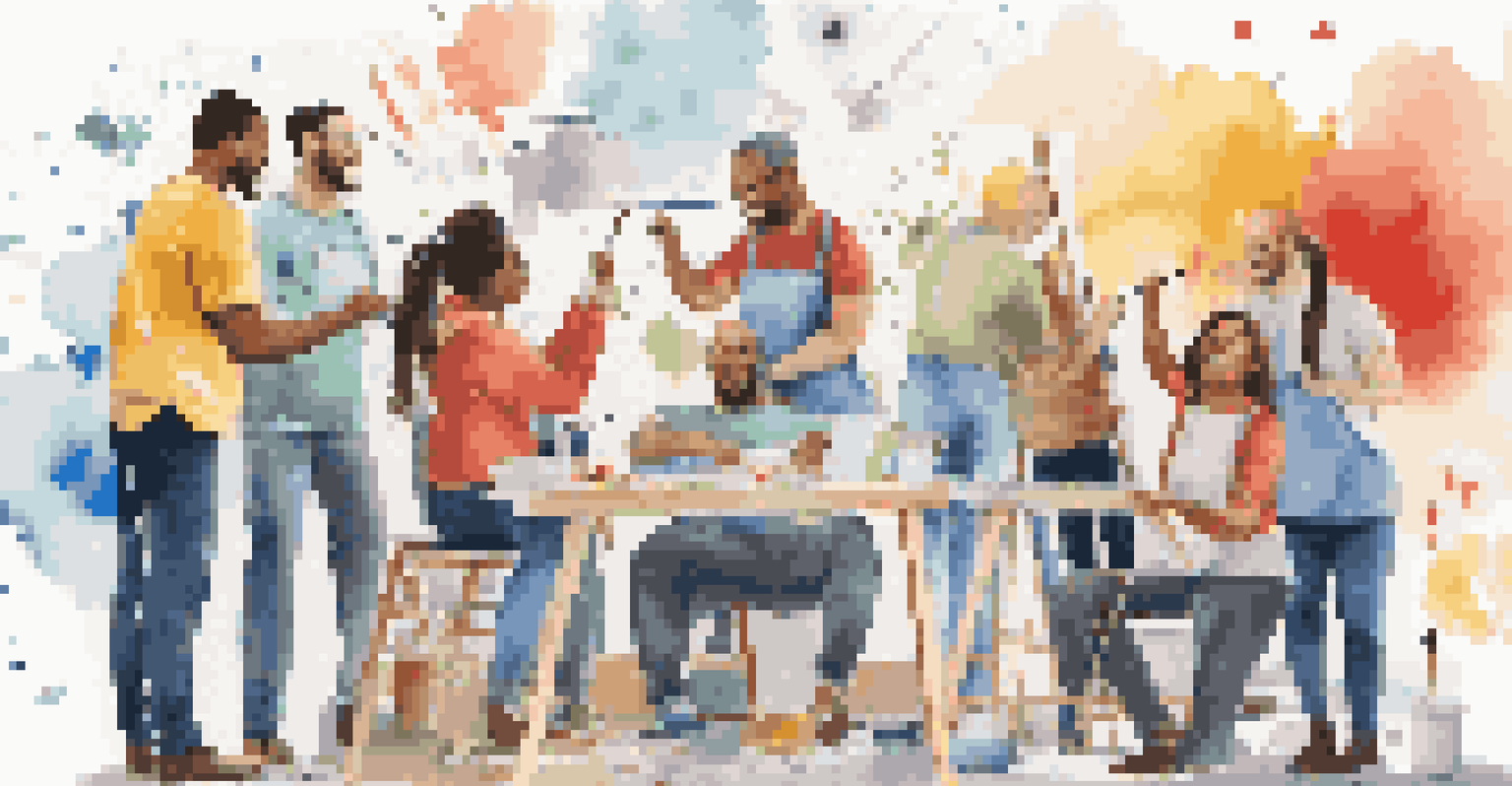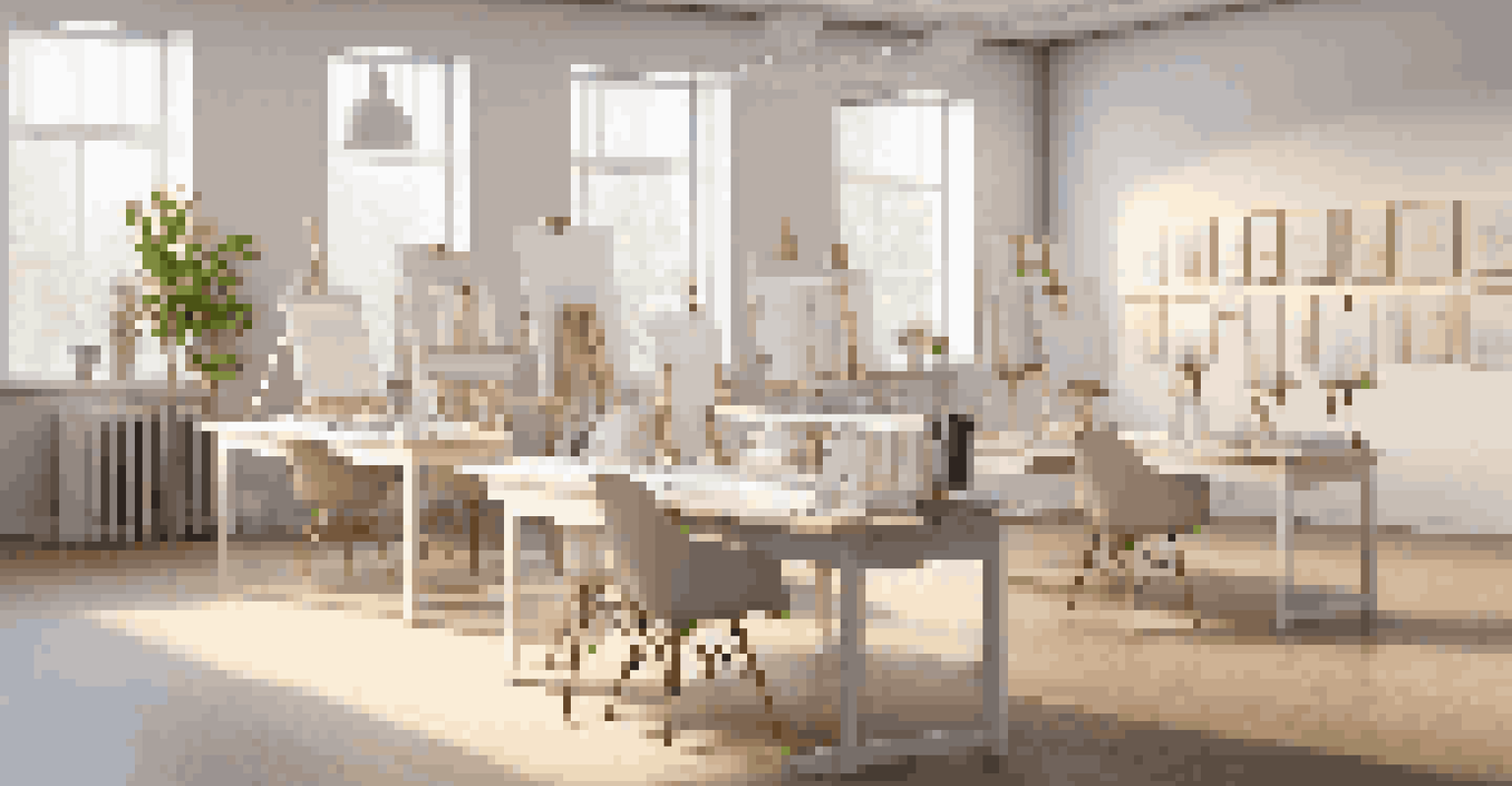The Role of Art in Promoting Workplace Creativity and Wellness

Understanding the Connection Between Art and Creativity
Art has long been a medium for self-expression, and its role in fostering creativity is profound. When employees engage with art, whether through creation or appreciation, it stimulates their imagination and encourages innovative thinking. Much like how a painter blends colors to create a masterpiece, the act of engaging with art helps individuals blend ideas and concepts in exciting new ways.
Every artist was first an amateur.
Moreover, exposure to various art forms can spark inspiration that transcends traditional work boundaries. For example, a team viewing an abstract sculpture might discuss its shapes and lines, leading to brainstorming sessions that produce unique solutions to work challenges. This collaborative spirit not only enhances creativity but also strengthens team dynamics.
In essence, integrating art into the workplace encourages a culture of creativity that benefits both individual and group performance. By valuing artistic expression, companies can cultivate an environment where innovative ideas flourish, ultimately driving success.
The Psychological Benefits of Art in the Workplace
Art isn't just about aesthetics; it plays a crucial role in mental health and wellness. Engaging with art can reduce stress and anxiety, providing a much-needed break from the hustle and bustle of daily tasks. When employees take time to appreciate or create art, it helps them recharge and refocus, leading to increased productivity.

For instance, many organizations have implemented art therapy programs to support employee wellbeing. These initiatives allow workers to express their feelings through creative outlets, promoting emotional resilience. Over time, this practice can lead to a more harmonious workplace where individuals feel valued and supported.
Ultimately, the psychological benefits of art contribute to a happier workforce. A satisfied employee is often a more productive one, and by prioritizing mental wellness through art, companies can foster a thriving workplace culture.
Art as a Tool for Team Building and Collaboration
Art can serve as a powerful tool for team building. When employees come together to create or experience art, they forge deeper connections and enhance their collaborative skills. Activities like collaborative mural painting or group pottery classes encourage communication and teamwork in a relaxed setting.
Art enables us to find ourselves and lose ourselves at the same time.
These shared artistic experiences can break down hierarchical barriers and promote a sense of belonging among team members. When individuals feel connected to one another, they are more likely to share ideas and support each other's creativity, leading to a more cohesive work environment.
As teams engage in artistic endeavors, they also learn to appreciate diverse perspectives. This exposure to different viewpoints not only enriches the creative process but also fosters a culture of inclusivity and mutual respect.
Incorporating Art into the Workplace Environment
The physical workspace plays a significant role in employee creativity and wellbeing. Incorporating art into the office design—such as murals, sculptures, or interactive installations—can create an inspiring atmosphere that stimulates creativity. A vibrant workspace encourages employees to think outside the box and feel more engaged in their tasks.
Additionally, creating designated art areas or quiet zones where employees can unwind and express themselves can further enhance their experience. These spaces offer a retreat from the daily grind, allowing individuals to recharge their creative energies.
By intentionally integrating art into the workplace environment, companies can signal their commitment to employee wellbeing and creativity. This thoughtful approach can lead to increased job satisfaction and a stronger organizational culture.
Art Programs and Initiatives to Boost Employee Engagement
Many organizations are recognizing the value of structured art programs to boost employee engagement. Workshops, art classes, and creative challenges can be great ways to get employees involved and excited about artistic expression. These initiatives not only provide an outlet for creativity but also encourage camaraderie among colleagues.
For example, hosting a monthly art night where employees can showcase their work fosters a sense of accomplishment and community. Such events create a platform for sharing talents and ideas, further enriching the workplace culture.
Ultimately, these art programs can lead to enhanced employee morale and retention. When employees feel engaged and valued, they are more likely to stay committed to their organization.
The Role of Digital Art in Modern Workspaces
As technology continues to evolve, digital art has become an increasingly important aspect of the workplace. Virtual art installations and digital creative tools allow employees to explore their artistic side without the constraints of traditional media. This modern approach to art can be particularly appealing to younger generations who are more comfortable with technology.
Incorporating digital art into presentations or collaborative projects can also enhance engagement and creativity. For instance, using graphic design software to create visually appealing content can inspire innovative ideas and solutions during team discussions.
Moreover, digital art can reach a wider audience within the organization, as it can be easily shared and accessed online. This accessibility ensures that artistic expression remains a vital part of the workplace culture, regardless of physical location.
Measuring the Impact of Art on Workplace Dynamics
To fully appreciate the role of art in promoting creativity and wellness, it's essential to measure its impact on workplace dynamics. Surveys, feedback sessions, and performance metrics can help organizations gauge how art initiatives affect employee morale and creativity. This data-driven approach allows companies to refine their programs and maximize benefits.
For example, tracking employee engagement levels before and after implementing art initiatives can reveal valuable insights into their effectiveness. Companies can use this information to make informed decisions about future investments in artistic programs.

Ultimately, measuring the impact of art helps organizations understand its true value in enhancing workplace culture. By continuously evaluating and adjusting their art initiatives, companies can ensure they are fostering an environment where creativity and wellness thrive.
The Future of Art in Enhancing Workplace Culture
As we look to the future, the role of art in the workplace is poised to expand even further. With increasing recognition of its benefits, more organizations will likely prioritize artistic expression as a core element of their culture. This shift could lead to the emergence of new roles focused on art integration and workplace wellness.
Furthermore, as remote work continues to be a norm, finding innovative ways to incorporate art into virtual environments will be crucial. Companies may explore augmented reality art experiences or virtual art galleries to keep employees engaged and connected, regardless of location.
In conclusion, the future of art in the workplace is bright, with endless possibilities for enhancing creativity and wellness. By embracing these changes, organizations can create a dynamic and thriving environment that benefits everyone involved.